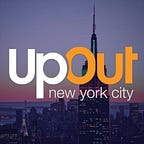By PlaceILive
Living new New York City has many perks. We have one of the world’s best public transportation systems. We can get food delivered at any hour of the day or night. We’re home to some of the most creative and crazy people on the planet. But all that comes at a price.
Remember when we talked about that noise pollution map of New York City? Our friends at PlaceILive reminded you that you live in NYC for many reasons, but peace and quiet aren’t anywhere on the list. Now they’re back at it again, and this time they mapped out the areas of the city with the best and worst air quality.
Let’s take a look at what they found. First, New York City by day:
BreezoMeter was used to gather the data. Almost every country calculates an Air Quality Index (AQI) — a scale of numbers that represents the current or daily air quality levels in different areas. The AQI is based on local air quality standards and pollutants concentrations that each country decides upon.
And therein lies the problem: every country’s AQI is unique, which means a lot of complication and confusion.
To combat that issue, BreezoMeter created its own standardized Air Quality Index that goes from 0 (poor air quality) to 100 (excellent air quality) with 5 categories of equal lengths. Here’s what the United States AQI looks like next to BreezoMeter’s AQI:
Looking back at that map of NYC, we see… an uncomfortable amount of red. There are more pockets of red on New York City than on an acne-prone teenager’s face.
One of the worst offenders is Staten Island’s West Shore, a hub of industrial activity with only one residential neighborhood. Through the late 20th century the West Shore was dominated by industrial activities, most notably oil refining and construction. A large Con Edison electrical plant calls it home now, as well as the Teleport — a high-tech industrial park built in the early 1980s.
In Manhattan, much of the area along the Hudson River appears problematic (there’s probably a joke about proximity to Jersey in there somewhere), as do some of the more heavily-trafficked neighborhoods downtown (East Village, West Village, Lower East Side, Tribeca, etc).
What’s truly surprising is the patch of dark green that appears in Midtown. How is it possible that the area around Times Square isn’t a polluted wasteland?
There’s a significant patch of red in The Bronx along the East River, with Hunt’s Point at the center. The 20th century saw a great deal of industrial expansion for the area, including the openings of the New York City Produce market in 1967 and Hunts Point Meat Market in 1974. Today the Hunts Point Industrial Park hosts over 800 businesses.
Rikers Island, New York City’s most notorious jail complex, is also a conspicuous patch of red.
Over in Queens the area around JFK is suspiciously blank, presumably because no one could think of a color more threatening than red. Nearby areas make up for it, but nothing compares to the blotch around Maspeth.
Interestingly, Queens also has one of the few deep green spots on the map, around Seneca Ave between Stanhope St and Menahan St.
North Brooklyn is a surprisingly green affair (yes, even Williamsburg), but things get redder as you head south.
The worst offender is the area along the water near Bay Ridge and the Brooklyn Army Terminal, a large complex of warehouses, offices, piers, docks, cranes, rail sidings and cargo loading equipment in Sunset Park.
And now, before we remind you that NYC is crazy overpopulated and your lungs stage a coup, take a look at the nighttime air quality map:
Breathe deep, NYC. It’s not all bad.
[Featured Image: PlaceILive]
Originally published on www.upout.com/nyc
